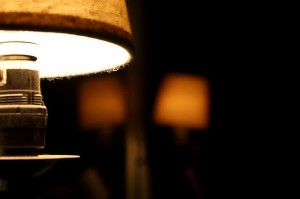 The one thing most people don’t know about upgrading to LEDs is that many home and business owners in [city] that replace their lights, often fail to live up to the maximum potential of LED lighting. LED retrofits aren’t exactly cheap, so it only makes sense to ensure you get the most out of your investment.
The one thing most people don’t know about upgrading to LEDs is that many home and business owners in [city] that replace their lights, often fail to live up to the maximum potential of LED lighting. LED retrofits aren’t exactly cheap, so it only makes sense to ensure you get the most out of your investment.
By now, you probably already know that LED lighting offers unsurpassed benefits when it comes to energy-efficiency and utility savings, but there are several factors to consider in order to customize your retrofit to your needs. By making smart and well-informed choices in your project, you can maximize the benefits of your LEDs and enjoy a faster return on investment.
Here are some tips to consider if you want maximize your LED retrofit:
1. Make a Lighting Survey
An LED replacement project for your [city] home or business presents the perfect opportunity to make changes to your lighting setup. Before you change your lights, check for areas that need improvement in lighting. Are there any dark spaces that need more or less light given the kind of activity that happens there? And don’t forget your exterior spaces—are they well lit?
Before replacing your lights, you first need to consider where to add more or different ballast types and lamps to properly illuminate your spaces, and conversely, where you can remove fixtures to reduce the level of lighting.
2. Determine Where to Install LED Light Bulbs
Given the great energy and utility savings offered by LEDs, as well as the incentive programs initiated in some states, you may think the best course of action is to swap all your existing lights to LEDs. While great, such a project could be very expensive, with the price of hundreds of LED bulbs exceeding your budget.
What you can do is determine areas in your home or business that can benefit the greatest from upgraded lighting. You may not be able to replace all your lights at once, but at least you can retrofit the lights in high-activity areas.
3. Consider Using Dimmers and Controllers
As with any other kind of light bulb, LEDs needlessly use electricity when they are switched on for long hours with nobody around. The good news is that most LED light bulbs are compatible with third-party lighting controllers, such as dimmers, daylight sensors, and occupancy sensors.
Dimming controllers allow you to fine-tune the level of lighting produced by your LEDs, while daylight sensors automatically switch on your lights when it senses a lack of natural light, turning them off when the sun rises. And lastly, occupancy sensors switch on the lights when they detect people are in a room.
Using these controllers entails knowing how the different areas of your home or business are used. For instance, offices can benefit greatly from occupancy sensors, switching off lights when no workers are around. If you have a porch or service area that gets significant sunlight, a daylight sensor helps avoid needlessly using your lights, saving you money.

![How to Make Your Landscape Lighting Environmentally Friendly [city]](https://8blocks.s3.amazonaws.com/eepros/blog-images/2015/05/landscapelights-300x185.jpg)
![3 Common Myths About LED Lighting – and What You REALLY Need to Know Instead [city]](https://8blocks.s3.amazonaws.com/eepros/blog-images/2016/10/hotel-1330845_640-300x206.jpg)
![5 Easy Lighting Hacks for Restaurant Owners and Managers [city]](https://eepros.com/wp-content/uploads/2020/01/woman-3083379_640-300x200.jpg)
![Spruce Up Your Home for Fall with These 6 Lighting Tips [city]](https://eepros.com/wp-content/uploads/2018/07/architecture-1477041_640-300x169.jpg)